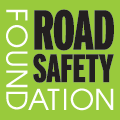RESPONSE TO PUBLIC CONSULTATION ON EUROPEAN ROAD SAFETY ACTION PROGRAMME 2011-2020
Summary
The Economic Scale of European Road Death and Risk
- Half a million EU citizens have been killed in road crashes during the current Road Safety Action Plan. Two million have suffered life changing injury. We all know someone killed or maimed.
- Road casualties bleed away at least 2% of European GDP p.a. – more than we spend on primary schools or doctors. EuroRAP has found support for action once the scale of the economic loss is understood by Finance and Transport Ministries, senior politicians and informed opinion.
- Health and safety risks have been transformed in all other fields in the last few decades. Yet we face risks on the roads some 10-30 times greater than any other risk in daily life. The way risk is managed on our roads is unacceptable, unreformed, costly and a quarter century out of date.
Prevention Methods are Known, the Challenge for the Action Plan is Delivery
- The next Road Safety Action plan can be delivery oriented. The key to delivery is through i) making detailed performance transparent and ii) pulling levers the EU already holds.
- We know how to prevent routine, predictable road deaths with actions that have the greatest potential for prevention – points system; seatbelts; helmets; drink; speed; road and vehicle safety engineering. Road safety engineering has the most Europe-wide potential.
- High, widespread economic and social returns are available by targeting the busier roads where deaths and the 2% GDP loss are concentrated. Every km of busy European road typically saw five deaths or serious injury during the last Action Plan.
- EuroRAP is assembling case studies which show very high returns from affordable, large scale safety engineering interventions. This is true whether countries are high or low income.
- Development Banks and progressive nations are funding investment recommendations from RAP Road Assessment Programmes worldwide. The OECD commends RAP analysis. Typically RAP recommendations have paybacks well in excess of normal hurdle rates for infrastructure.
Putting Right the Institutional Failure to Deliver Safe Roads
- Road safety engineering is under applied in all EU countries largely due to
- the historic engineering process which assumes wrongly that new roads are safe if built to the “standards” of the time
- no one agency being accountable for the poor safety levels of road infrastructure.
- Policymakers, road agencies and Finance Ministries have inadvertently institutionalised separate silos leaving no-one accountable for safe roads. Only one administration worldwide (Victoria, Australia) invests rationally – it is a monopoly insurer benefitting from the lower crash costs.
- Across Europe, even roads agencies with strong safety engineering capability have become resigned to failure in presenting the case for rational investment. Less resilient agencies ie most Agencies, do not even develop programmes for consideration knowing they will be rejected.
- The new UK draft road safety strategy identifies the failure and need for change. It expresses concern that a root cause is roads agencies not promoting safety programmes in a form where their benefits can be properly compared transparently with other publicly funded programmes.
The Role of Transparent Performance Indicators to Create Accountability
- The Commission’s single most important and successful safety action has been the creation of high level per capita safety performance indicators to reveal how well nations are doing overall.
- EuroRAP performance indicators are already used as a reference measure for safe roads in a dozen national European safety strategies (including EU candidate countries where safety standards must be raised urgently). These indicators are comparable worldwide.
- The 1st European Safety Atlas results, supported by the EC, will be published in 2009 including performance tracking over time in Poland and other eastern European nations.
- In 2008, Dutch policymakers announced the first minimum acceptable safety level of 3-stars for national roads – after economic appraisal and negotiation with their national roads agency.
- EuroRAP results show clearly that the 2% of GDP lost is concentrated on a relatively small targetable network of roads:
- two thirds is outside built-up areas
- in middle income countries the key target for action is the national road network
- in high income countries the target for action is the busy regional road network.
- The Dutch, Swedish and UK governments aid their national EuroRAP Members to track and publish regional authority performance in delivering safer roads e.g. in the UK this will be year by year to 2020, road by road, on a 50,000km rural network seeing more than 50% of UK deaths.
General Actions for the Next Action Plan
- The principal actions generally required of the EU in the Action Plan must be to declare itself as a:
- leading force in the UN Decade of Action 2010-2020
- champion of the safety of European citizens on the roads
- supporter of the ‘safe system’ pledged to enable combined action on safer behaviour, safer vehicles and safer roads.
- As with NCAP, the EU must join with consumers and leading nations to challenge robustly why unacceptable high risk roads are untreated while high returns are available.
- Scoping suggests as much as 0.5% EU GDP p.a. could be saved with smarter priority use of existing transport finance and up to 1/3rd of deaths prevented. The Commission must support evidence building and promotion by independent bodies in the political and professional arena.
- The EU can demonstrate the case for action on safe infrastructure by using the first European Road Safety Atlas mapping in the Action Plan and national and regional applications across EU countries. There is coverage now to estimate reliably the safety of European roads.
Specific Actions on Safe Road Design Needed in the Action Plan
- On road infrastructure specifically, the EU strategy document should announce:
- draft minimum safety standards for the Trans European Road Network at 4-star EuroRAP level. Continuous improvement programmes should be required to achieve this by 2020, as a condition of TERN funding, throughout the UN Decade of Action
- that, as in air, rail and marine safety, safety standards on all European roads should be set independently of road delivery agencies by 2015. The priorities for improving safety should be based on a road hierarchy and the numbers exposed to high risks.
- support for EuroRAP risk mapping, performance tracking and star rating through the European Road Safety Atlas so as to permit publication of the annual progress being achieved in raising the safety of European roads and identify persistent high risk roads
- an early requirement for the publication of annual reports on the network of roads where at least 50% of national deaths are concentrated together with reasons, other than money, why action is not taken on the worst 5% (cf. recent US legislation)
- support for research and monitoring to establish the economic costs and benefits that can be achieved with Safer Roads Investment Plans
- support for programmes of education on safe road design aimed at the differing stakeholders in a safe road system – public, road professionals, safety professionals and policymakers.
- A guarantee of freedom of information so that bona fide stakeholders are not denied access to road accident and necessary supporting data.
John Dawson
Chairman
European Road Assessment Programme (EuroRAP)


